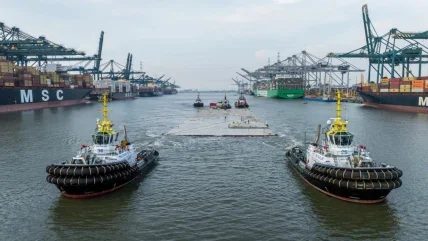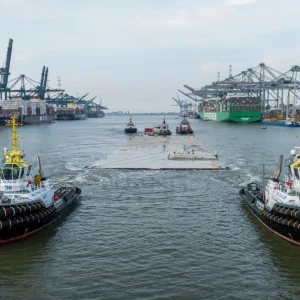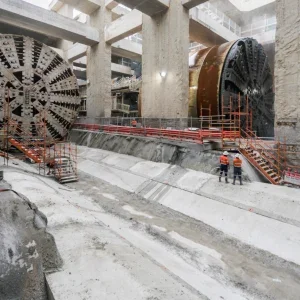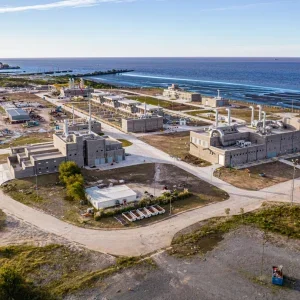
The first tunnel segment for the new Scheldt tunnel has arrived in Antwerp after being towed from the construction dock in Zeebrugge.
It is the first of eight elements for the immersed tunnel which will take the 111km journey across the North Sea and the Scheldt river.
The tunnel section will remain moored in the Doel Dock until it is immersed in its final position.
The tunnel elements, built in a specially built construction dock in Zeebrugge, measure 160m in length, 42m in width and 10m in height, and weigh approximately 60,000 tonnes.
Four tugboats and a pusher tug accompanied the tunnel element on the journey, which went according to schedule. Along the way, the transport stopped twice – in the outer harbour of Zeebrugge and in Terneuzen – to wait for the right tide.
Gert Osselaer, operations director at Lantis, the client of the Oosterweel connection, said the journey was completed faster than planned.
“We had planned a buffer, but it turned out to be unnecessary. Thanks to all partners for the careful preparation and execution, this was only possible in close collaboration with the Agency for Maritime Services and Coast, the Department of Mobility and Public Works, the Joint Nautical Authorities, emergency services, the pilots and the Port of Antwerp-Bruges,” he said.
TM Cotu project director Jan Bauwens said the passage over the North Sea and the bends in the Scheldt river were the most challenging issues, but the journey went smoothly and according to schedule.
“For the next seven elements, we will take the lessons from this trip with us to further optimise the process, but thanks to the many simulations, this has already been quite successful,” he said.
“The strength of this operation was in the preparation and in the expertise of all the teams and in the flawless communication between the command post in the pusher, the tugs and all the accompanying authorities. That deserves a special mention.”
Osselaer said that along the route onlookers watched the tunnel element’s progress.
“Along the entire route we saw a lot of people watching, from Zeebrugge to Antwerp. It is particularly nice to see how much interest there is in technology. This is a unique nautical operation, and it is great that with such complex transport we not only cross the ports, the sea and the Scheldt, but can also touch Flanders and hopefully inspire future generations,” he said.
In the coming months, the remaining seven tunnel sections will be transported to Antwerp in a similar manner. From July, the sections will be sunk one by one in the Scheldt, at the height of the Sint-Annabos on the Left Bank. There, they will be connected to each other to form the complete tunnel structure.







